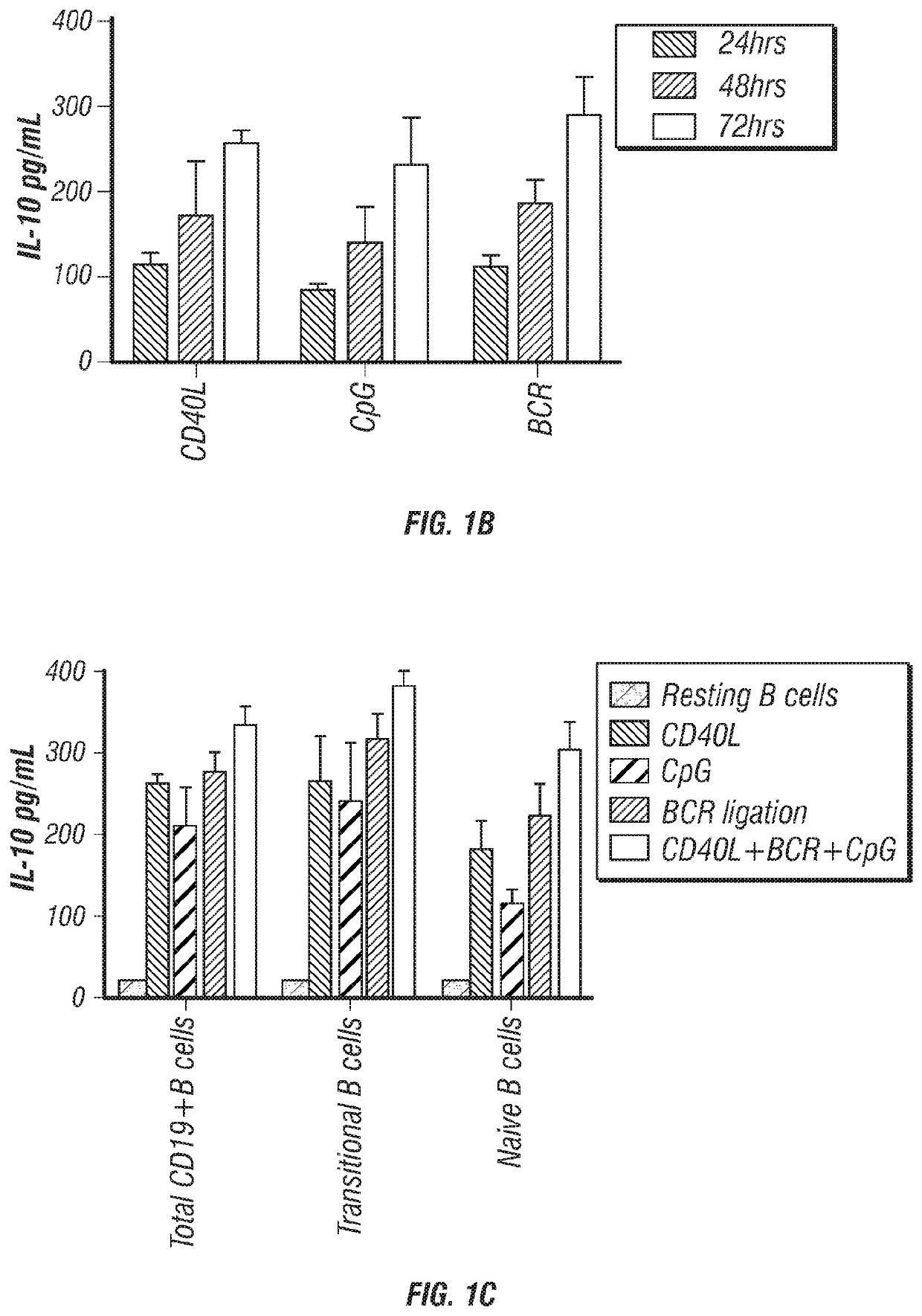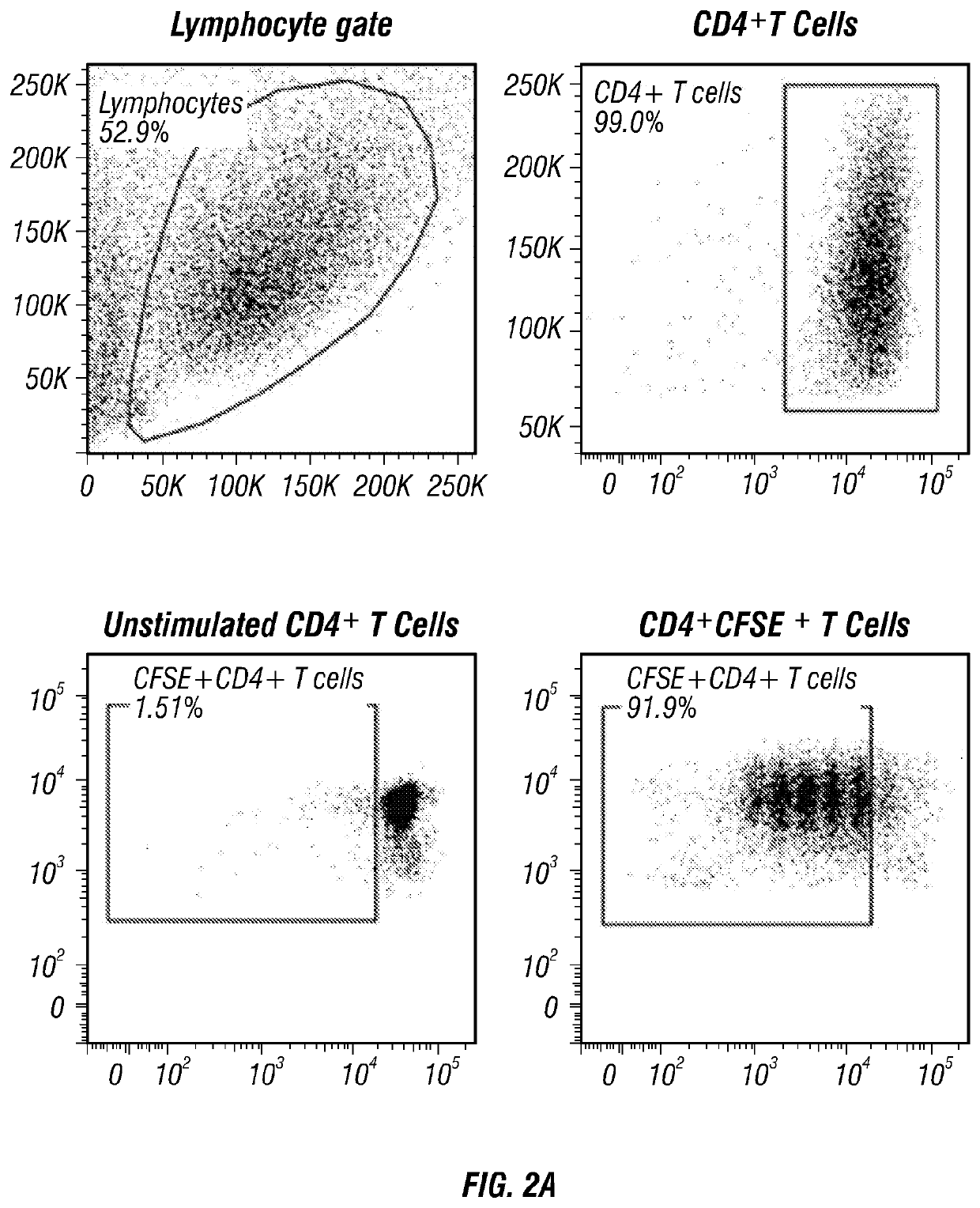Regulatory b cells and uses thereof
a technology of b cells and b cells, applied in the field of medicine and immunology, can solve the problems of unsatisfactory need and lack of suitably matched unrelated donors
- Summary
- Abstract
- Description
- Claims
- Application Information
AI Technical Summary
Benefits of technology
Problems solved by technology
Method used
Image
Examples
example 1
n of Regulatory B Cells
[0156]Human CB is Enriched in IL-10-Producing CD19+ B Cells:
[0157]Phenotypic characterization of CB revealed the presence of two distinct B cell populations: CD19+CD38hiCD24hi transitional B cells (a population that includes immature B cells) and CD19+CD38intCD24int naïve B cells (primarily mature B cells) (FIG. 1A). Further phenotypic characterization confirmed that the majority of CD19+CD38hiCD24hi transitional B cells were also IgMhiIgD+CD10+CD27−, whereas CD19+CD38intCD24int naive B cells were IgMintIgD+CD10−CD27−.
[0158]IL-10 production has long been considered a defining trait of Breg cells (Tedder, 2015). Thus, it was determined whether CB-derived CD19+ B cells produce IL-10 by magnetically purifying CD19+ B cells from CB mononuclear cells (CBMCs) and culturing them with either CD40L, CpG or anti-BCR for 24, 48 and 72 hr, after which the supernatants were harvested and assayed for IL-10 secretion. The results confirmed that CB-derived CD19+ B cells have ...
example 2
and Methods
[0178]Patients and Controls:
[0179]All patient samples were collected after written informed consent was given in accord with local policy guidelines at the MD Anderson Cancer Center (MDACC) and the Declaration of Helsinki. Patient characteristics are summarized in Table 2.
[0180]Human Cell Isolation:
[0181]Cord blood units for research were provided by the MDACC Cord Blood Bank. Peripheral blood (PB) and CB mononuclear cells were isolated by density-gradient separation (Lymphoprep). B cell subsets were then sort-purified on FACSAria III (Becton Dickinson) following staining with CD19-APC, CD24-FITC (BD Pharmingen) and CD38-Pecy7 (eBiosciences). CD4+ T-cells, CD19+ B cells and CD4+CD25+ regulatory T-cells were isolated by magnetic-bead purification (Miltenyi Biotec) following the manufacturer's instructions.
[0182]Characterization of IL10+CD19+ B Cells in CB and PB from CBT Recipients:
[0183]IL10+ B cells from CBT recipients were characterized by intracellular cytokine detecti...
PUM
| Property | Measurement | Unit |
|---|---|---|
| Time | aaaaa | aaaaa |
| Time | aaaaa | aaaaa |
| Fraction | aaaaa | aaaaa |
Abstract
Description
Claims
Application Information
 Login to View More
Login to View More - R&D
- Intellectual Property
- Life Sciences
- Materials
- Tech Scout
- Unparalleled Data Quality
- Higher Quality Content
- 60% Fewer Hallucinations
Browse by: Latest US Patents, China's latest patents, Technical Efficacy Thesaurus, Application Domain, Technology Topic, Popular Technical Reports.
© 2025 PatSnap. All rights reserved.Legal|Privacy policy|Modern Slavery Act Transparency Statement|Sitemap|About US| Contact US: help@patsnap.com



